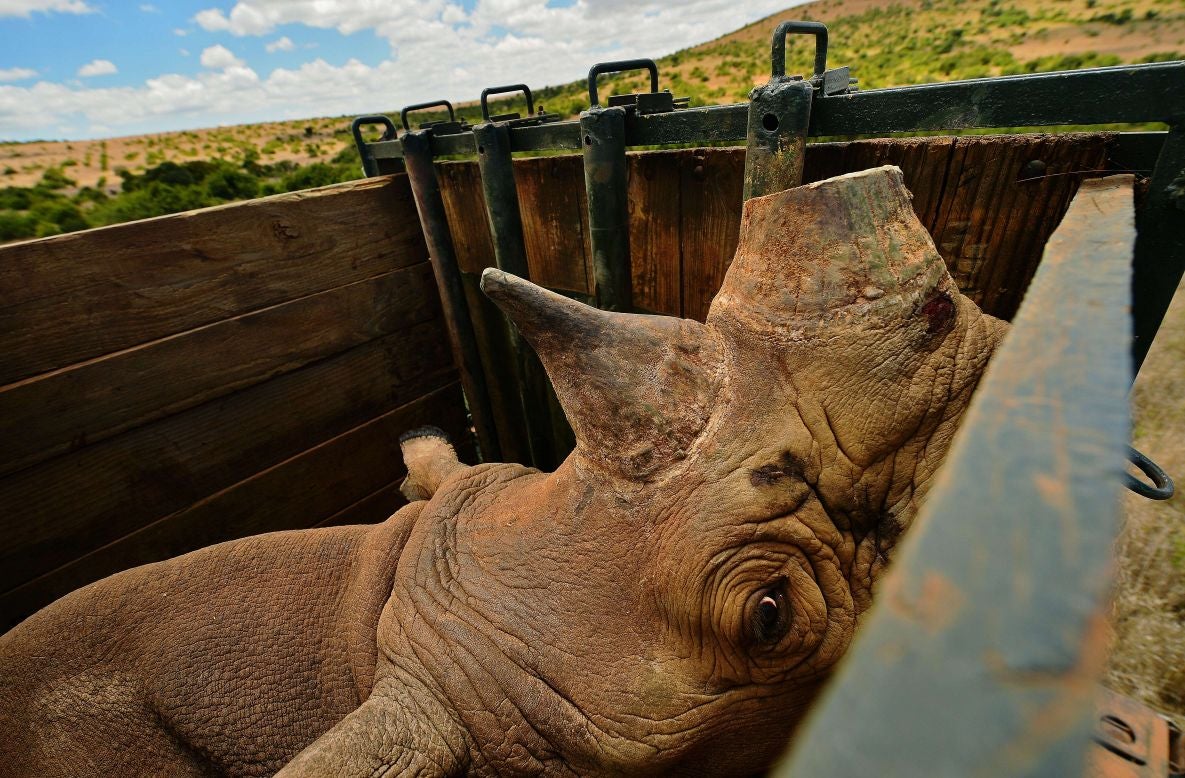The tragic medicinal myth which condemns hundreds of rhino to death every year
Their ivory is now believed to be worth more, gram for gram, than cocaine

Your support helps us to tell the story
From reproductive rights to climate change to Big Tech, The Independent is on the ground when the story is developing. Whether it's investigating the financials of Elon Musk's pro-Trump PAC or producing our latest documentary, 'The A Word', which shines a light on the American women fighting for reproductive rights, we know how important it is to parse out the facts from the messaging.
At such a critical moment in US history, we need reporters on the ground. Your donation allows us to keep sending journalists to speak to both sides of the story.
The Independent is trusted by Americans across the entire political spectrum. And unlike many other quality news outlets, we choose not to lock Americans out of our reporting and analysis with paywalls. We believe quality journalism should be available to everyone, paid for by those who can afford it.
Your support makes all the difference.It must count as one of the most tragic myths in the history of medicine: a lethal blend of nostalgia for traditional practices and a very modern hunger for luxury, status and prestige, all fuelled by a pernicious, baseless rumour.
Last year, more than 1,000 rhino were slaughtered in South Africa alone – the country’s worst ever year for poaching. The killings are a modern phenomenon, driven by a new and growing market for rhino horn as a medicine in China and other Asian nations – but most significantly in Vietnam.
The ingredient has been used in traditional Chinese medicine for thousands of years, as a “detoxifier” to treat fevers, headaches, impotence and other ills.
With little actual scientific evidence for any significant medical benefit, demand had been relatively low until very recently. In the past five years, it has soared – an escalation mirrored grimly in the number of animals killed by poachers in Africa. In 2007, just 13 were lost in South Africa. By 2012 it was 668 and last year 1,004. Thirty-seven have already died this year, as of mid-January.
Demand is driven by a small minority of wealthy consumers in Vietnam and to a lesser extent in China and elsewhere in Asia. Up to date prices are hard to come by, but some rhino horn is now widely believed to be more expensive, gram for gram, than gold or cocaine.
Investigations by Traffic, the wildlife trade campaign group, have revealed that rhino horn has become a fashionable health supplement, used by high status businessmen, celebrities and even government officials to relieve hangovers, cure colds and generally increase wellbeing. It is usually ground into a powder and mixed with water to create a smoky-tasting medicine.
The root of the current vogue is believed to be an urban myth, which began circulating as early as 2009, that an unnamed senior politician, or in some versions his wife, was cured of cancer after taking rhino horn. Traditional Chinese medical manuals make no mention of rhino horn as a cancer cure, but the myth has taken hold in a country where cancer rates are rising significantly.
Claims of its benefit have been supported by some senior traditional practitioners in recent years.
However, the actual scientific basis for using rhino horn as a medicine for any condition is almost non-existent. The only academically sound study ever conducted into its effect on humans found a short-lived benefit in treating childhood fever – but the same test found that simply taking a version of paracetamol was far more effective, according to a 2012 report by the CITES Secretariat. In Vietnam, though, the main reason for buying rhino horn is prestige. Dr Richard Thomas, from Traffic, said it had become a “status symbol”.
“People show off that they are able to afford this fabulously expensive drug,” said Dr Thomas. “It’s used as a body detoxifier – people mix it up as a powder in water, then take it before they start drinking so they don’t get a hangover, or later to cure a hangover.
“The origin of the cancer rumour is one of those things you can never pin down. It’s an urban myth and we have come across examples of criminals directly targeting cancer patients saying: ‘This is the new miracle drug that will cure you’.” A survey of 720 consumers in Hanoi and Ho Chi Minh City, carried out by Traffic and the World Wildlife Fund for Nature (WWF) last year, found that “ buyers and users of rhino horn form a powerful social network consisting of important individuals with whom it is crucial to maintain good relationships” and the luxury item is often given as a gift to family members or business colleagues.
The Vietnamese news website vietbao.com has referred to “rhino horn with wine” as the “alcoholic drink of millionaires” and there are even reports of it being snorted with cocaine.
“The truth is, rhino horn is keratin, the same material as our hair and nails,” said Dr Raj Amin, senior wildlife biologist at the Zoological Society of London (ZSL), who is attending today’s conference on the illegal wildlife trade in London.
“There is next to no medicinal value to it. It just makes no sense and it has been a battle. When you’re working in the field, seeing the rhino carcasses, it is baffling. To kill; to go to such efforts to acquire something useless, is just baffling.”
Read more about our elephant campaign
Join our commenting forum
Join thought-provoking conversations, follow other Independent readers and see their replies
Comments